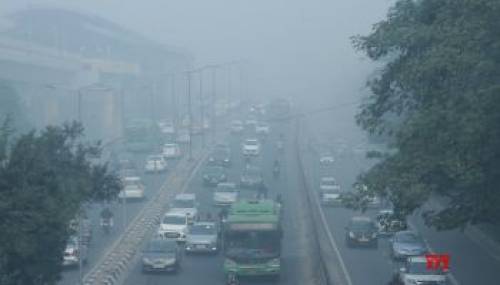Air sensing technology reveals adverse impact of smog in Delhi
Karuna tracked air pollution exposure using a Dyson Air Sensor Portable Backpack that tracks air pollution exposure by collecting air pollution data on the go.
- by B2B Desk 2021-01-20 06:44:13
Delhi-based Karuna Chauhan tracked exposure to air pollution throughout the daily routine in stages and found that the level of pollution increased over time, according to a report by global technology company Dyson.
Karuna tracked air pollution exposure using a Dyson Air Sensor Portable Backpack that tracks air pollution exposure by collecting air pollution data on the go.

"Using our unique algorithm to process detailed air pollution exposure reports, this innovative technology allows us to monitor air quality indoors, outdoors, and on the go. Plus, it all fits in a backpack," Alex Knox, Vice President of Care environmental in Dyson,said In a sentence.
The Air Quality backpack was initially developed by Dyson engineers to study Breathe London with Kings College London and the Greater London Authority.
Dyson engineers analyzed the results by matching the backpack's air sensor and GPS data with Karuna's journal entries, while documenting Karuna's activities and observations during the period he was wearing the air quality backpack. This allowed them to understand what caused the pollution and how Karuna could reduce their exposure to pollution in the future.
Karuna, who is among a group of volunteers and journalists globally who are working with Dyson to raise awareness about air pollution, said in a statement.
Karuna used the backpack on October 3, 2020 (Stage 1) and then again on November 8 (Stage 2), repeating the same activities and routines, which included home cooking to yoga in the garden, at each stage to allow for exercise. . Comparison of the two time periods.
In November, the deterioration in air quality was evident with thick fog falling over the city.
Compared to the first phase, the pollution data collected in the second phase indicated a significant increase in PM2.5 levels, with average levels increasing by 459%. These levels remained high both indoors and outdoors, regardless of the activity that took place.
Karuna phase 1 data sheds light on how air quality is affected by daily activities.
Actions like frying food in the kitchen caused a five-fold increase in PM2.5, while visiting the foreign market caused NO2 levels to skyrocket to 2,500ppb, which scores very weak on the Dyson AQI scale.
Karuna's exposure to PM2.5 and NO2 pollution peaked while driving on the road. This is not surprising, as these are pollutants commonly associated with vehicle emissions.
Also Read: Make Your Money Grow: How to get wealthy with smart investment

POPULAR POSTS
Loan EMIs to Drop as RBI Slashes Repo Rate - Full MPC December 2025 Highlights
by Shan, 2025-12-05 11:49:44
Zoho Mail vs Gmail (2025): Which Email Platform Is Best for Businesses, Startups, and Students?
by Shan, 2025-10-09 12:17:26
PM Modi Launches GST Bachat Utsav: Lower Taxes, More Savings for Every Indian Household
by Shan, 2025-09-24 12:20:59
$100K H-1B Visa Fee Explained: Trump’s New Rule, Clarifications & Impact on Indian Tech Workers
by Shan, 2025-09-22 10:11:03
India-US Trade Deal Soon? Chief US Negotiator Arrives in Delhi as Talks Set to Begin Tomorrow
by Shan, 2025-09-15 11:54:28
Modi Meets Xi: Trump’s Tariffs, Strategic Autonomy, and the Future of Asia’s Power Balance
by Shan, 2025-09-03 06:40:06
Google Claims Gemini AI Uses Just ‘Five Drops of Water’ Per Prompt, Sparks Debate
by Shan, 2025-08-22 12:34:27
RECENTLY PUBLISHED

Pine Labs IPO 2025: Listing Date, Grey Market Premium, and Expert Outlook
- by Shan, 2025-11-05 09:57:07

The Agentic Revolution: Why Salesforce Is Betting Its Future on AI Agents
- by Shan, 2025-11-05 10:29:23

Top 10 Insurance Companies in India 2026: Life, Health, and General Insurance Leaders Explained
- by Shan, 2025-10-30 10:06:42

OpenAI Offers ChatGPT Go Free in India: What’s Behind This Big AI Giveaway?
- by Shan, 2025-10-28 12:19:11

Best Silver Investment Platforms for 2025: From CFDs to Digital Vaults Explained
- by Shan, 2025-10-23 12:22:46





 Subscribe now
Subscribe now 